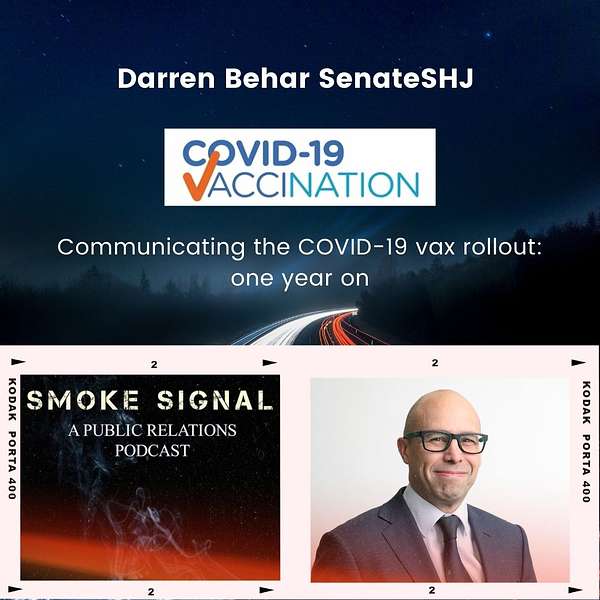
Smoke Signal, A Public Relations Podcast
Smoke Signal, A Public Relations Podcast
A Public Relations Podcast: Smoke Signal Episode 33: Communicating the COVID-19 vax rollout: one year on
It has been the communication story that has dominated the past 12 months – getting Australians vaccinated.
Last month, we marked one year since the COVID-19 vaccination roll out started in Australia. While our vaccination rates are now among the highest in the world, a successful roll out was not always so certain.
One person who has been deeply engaged with this communication challenge is Darren Behar who is Managing Partner at one of Australia’s largest independent consultancies – SenateSHJ.
In this episode of Smoke Signal, Darren takes us back to that time 12 months ago when we’d emerged from the depths of 2020 hoping that 2021 was going to be the year we returned to normalcy. It didn’t pan out that way. Mixed messaging from Federal and State Government, competing narratives, and a rise in misinformation and disinformation saw the push to vaccinate start out, for lack of better words, in chaos.
Darren explains that in the early days there was no playbook for facing such a big challenge. It was being made up on the run – and that was a challenge for everyone, not just communicators.
While there was much confusion and complexity, it is at such a time that you need to go back to first principles: what is going to motivate individuals and communities and drive action?
“Peers, friends, family and trusted organisations in our lives are more likely to motivate us to change our behaviour,” Darren says. “Grassroots communication was key to help those at the front line communicate with their communities and stakeholders directly.”
While much of the attention was on the Government communication – no one will quickly forget the daily press briefings to announce case numbers – this was becoming increasingly challenging. Senate SHJ research found trust in Government deteriorated rapidly during the pandemic. While almost 60% said Government was effective at keeping them informed in 2020, 12 months later, just a third said Federal Government communication was influential in their behaviour – this at a time when they were trying to maintain COVID-safe behaviour and also get people vaccinated.
This made creating a social movement at the grassroots vital in overcoming this distrust and the increasing amounts of misinformation. Darren explains this was achieved by bringing together five elements: Common Cause; Catalyst; Connection, Coordination and Conversation.
There was also a need for more than one story and Darren sees three narratives that came together to help drive up vaccination rates:
- Duty: as a citizen this is the right thing to do for all Australians.
- Consequences: help open our borders quicker so we can travel and see family and friends; help open up the economy and get back to your local coffee shop.
- Responsibility: keep your family and community safe.
In terms of the lessons to add to the playbook for the future. Darren has three for leaders (Government and business):
- We need to be transparent and a more authentic in our communication: do what we say we are going to do.
- We have to be prepared to acknowledge faults: fess up when you mess up. It is ok to be vulnerable.
- Stories and narratives matter: It took a while to get them right but when it worked it drove tangible change.
